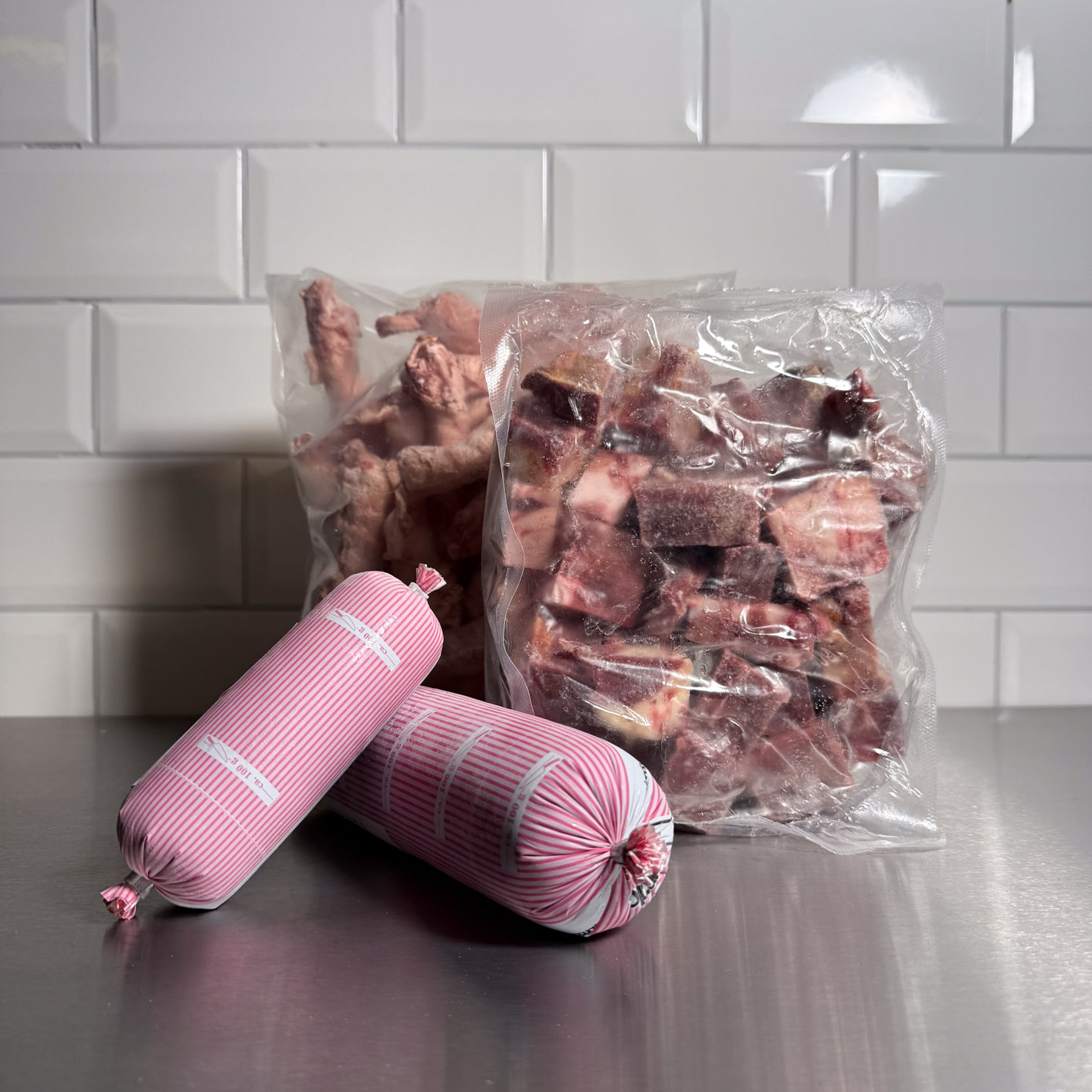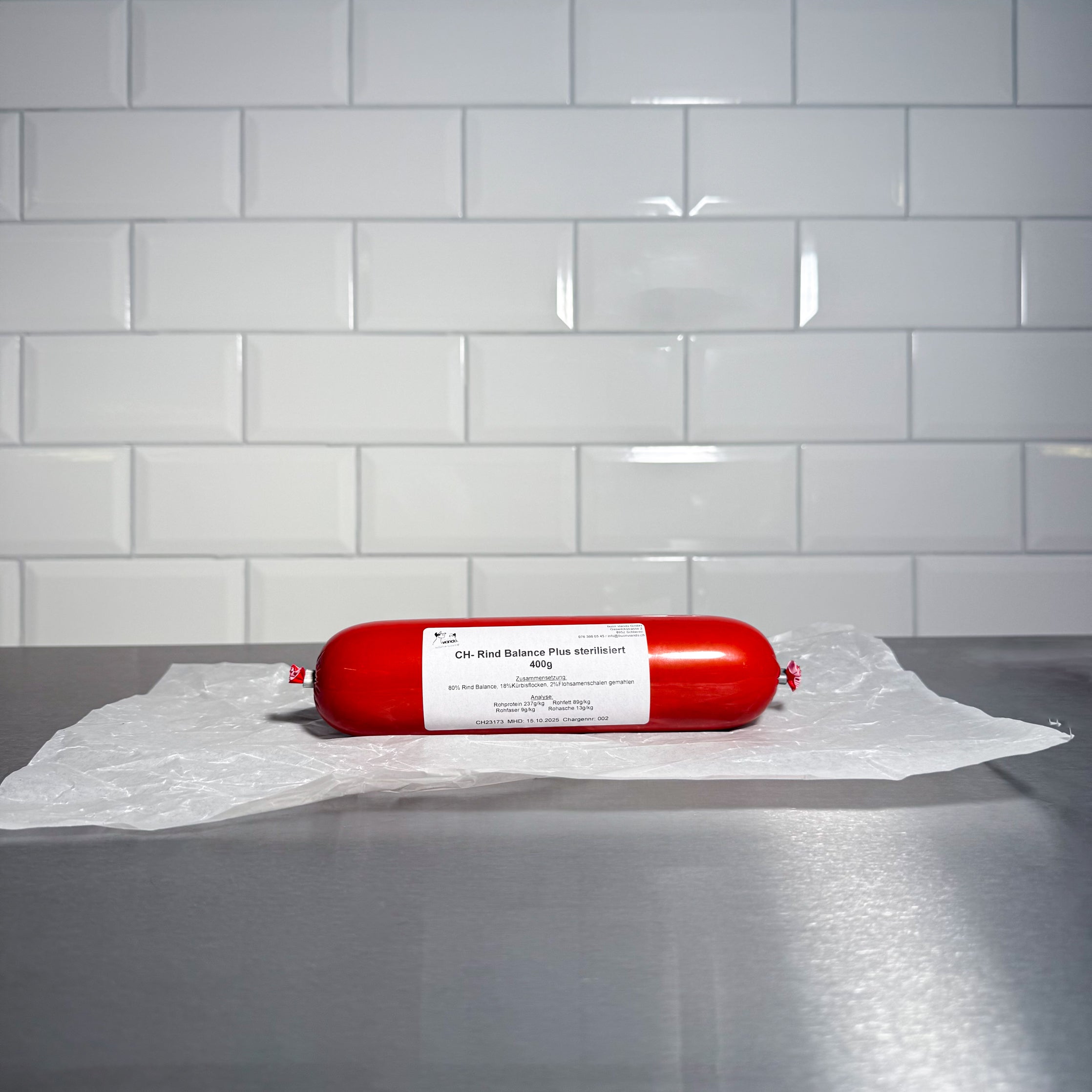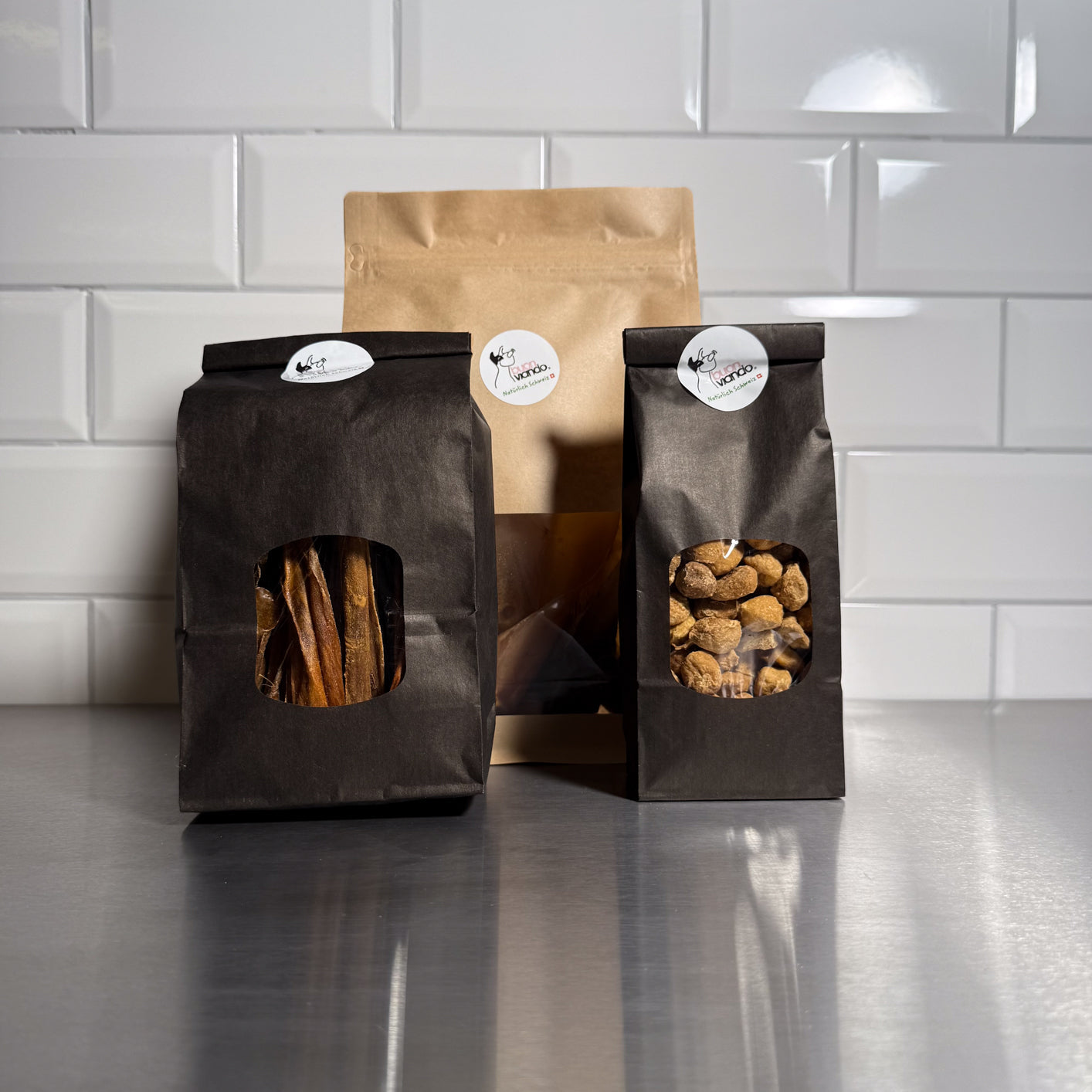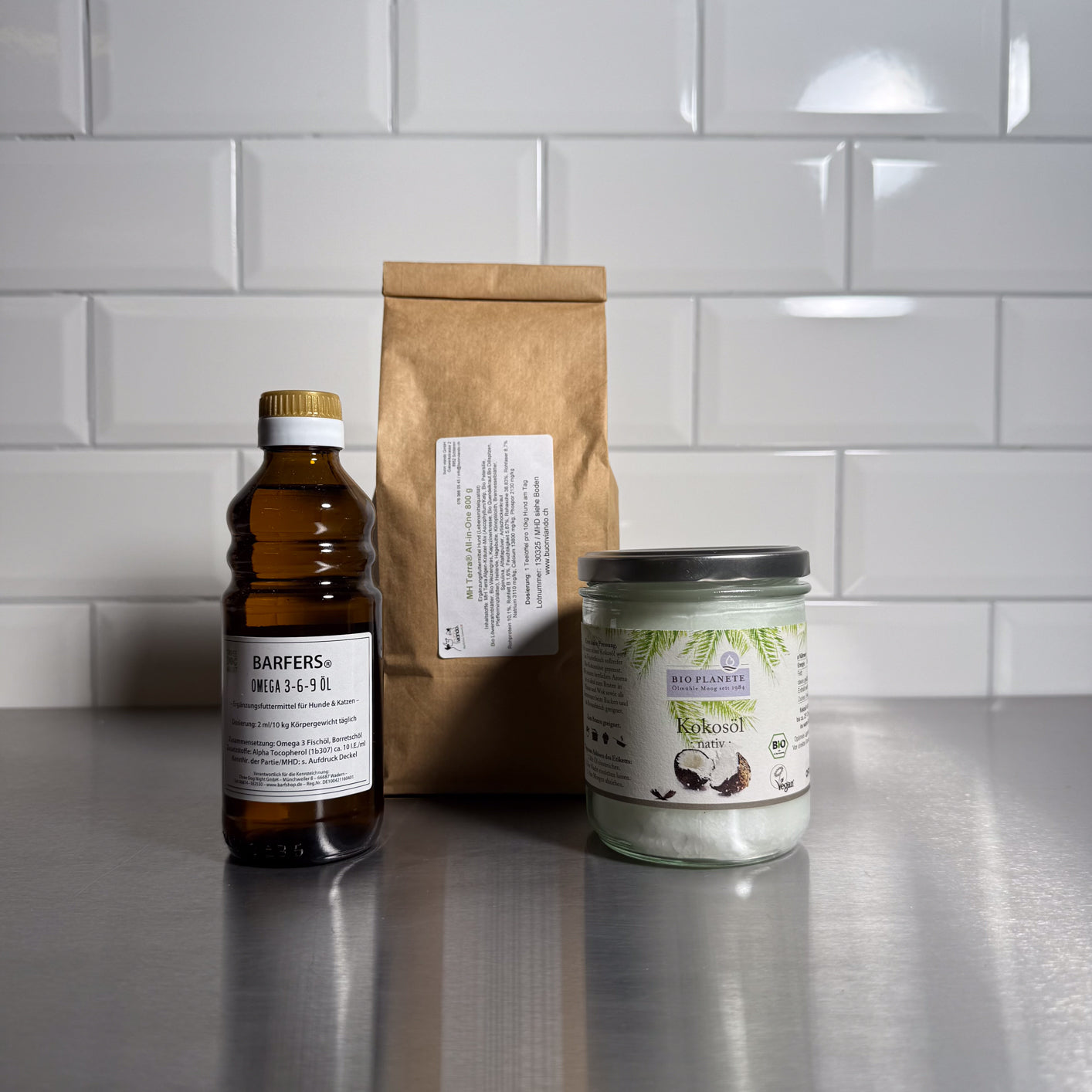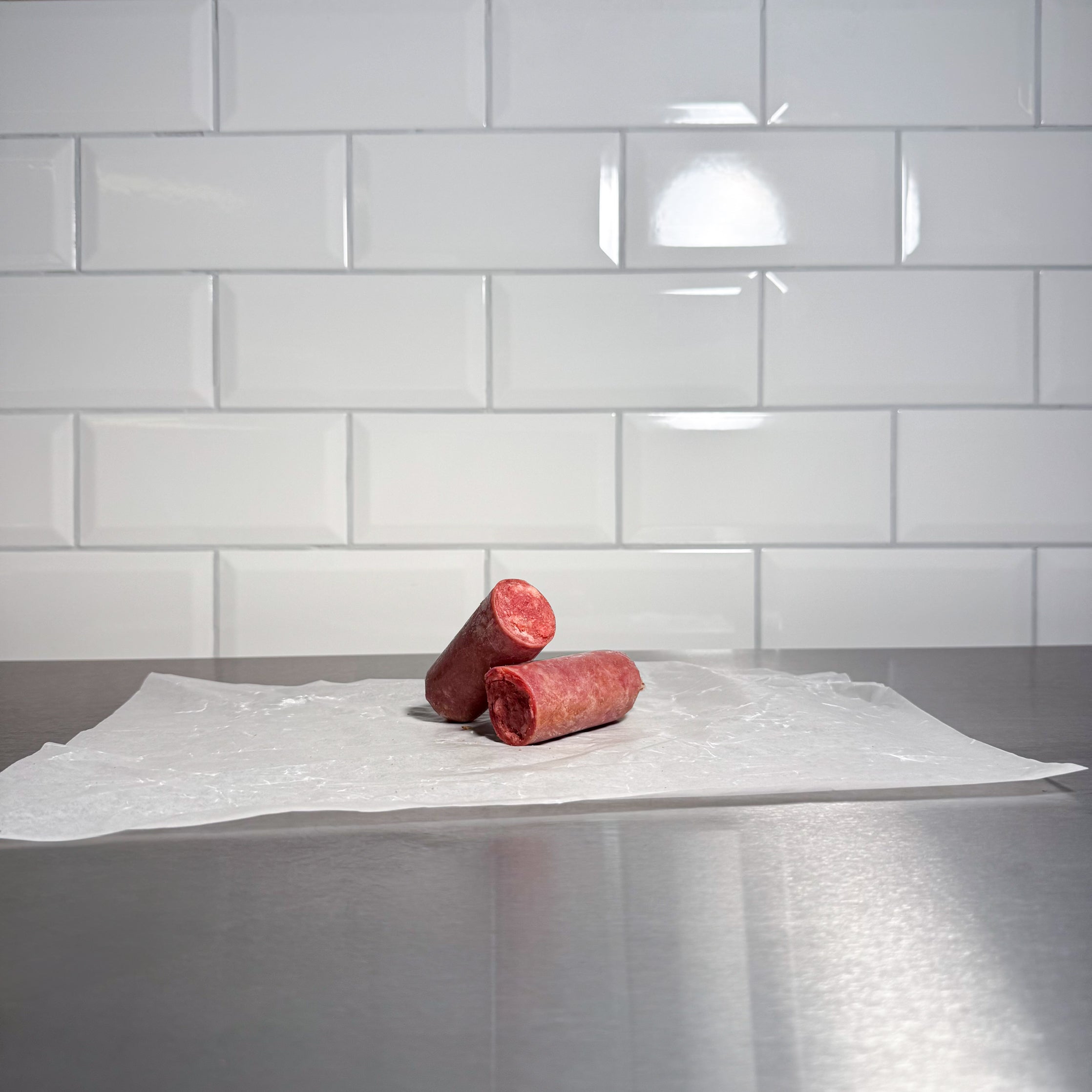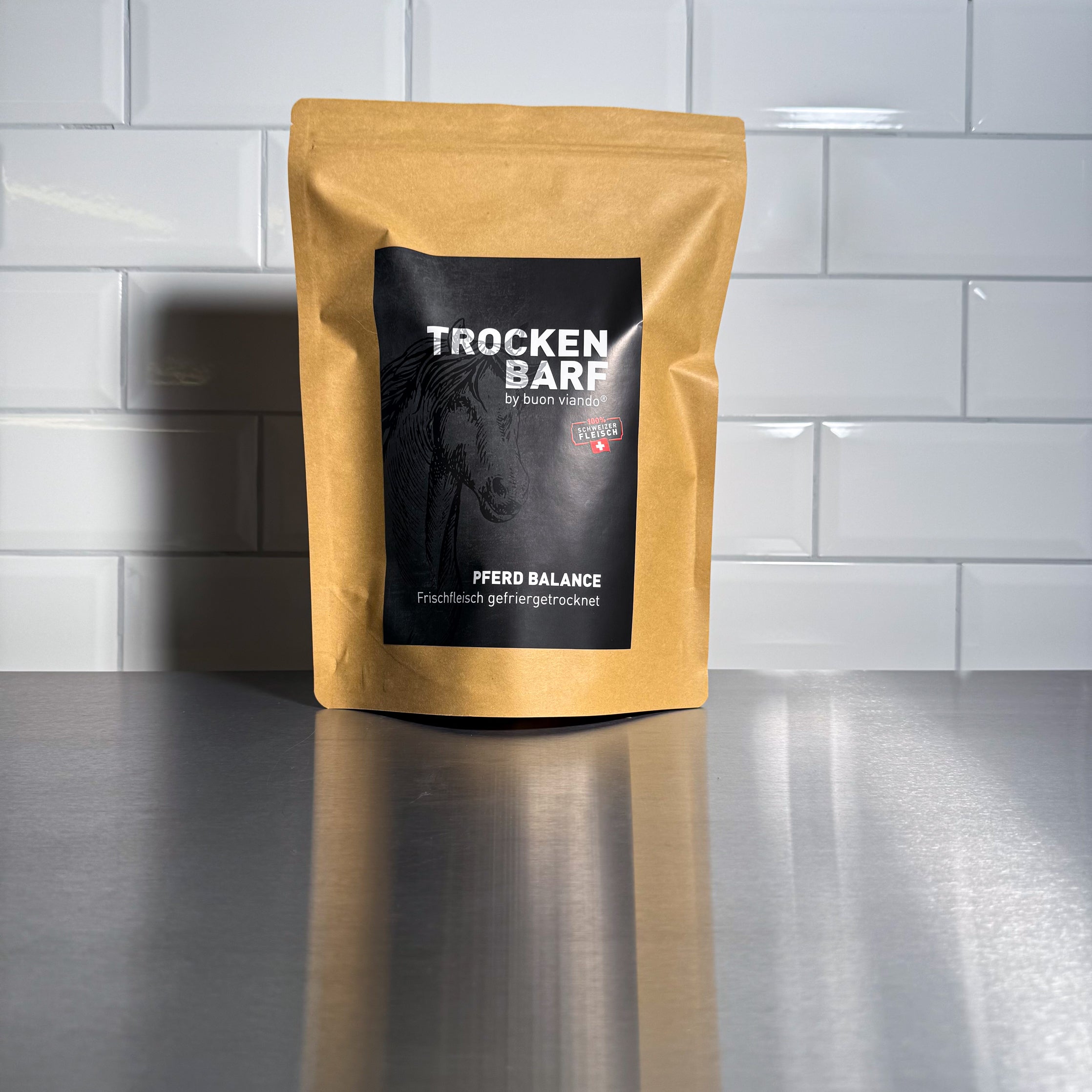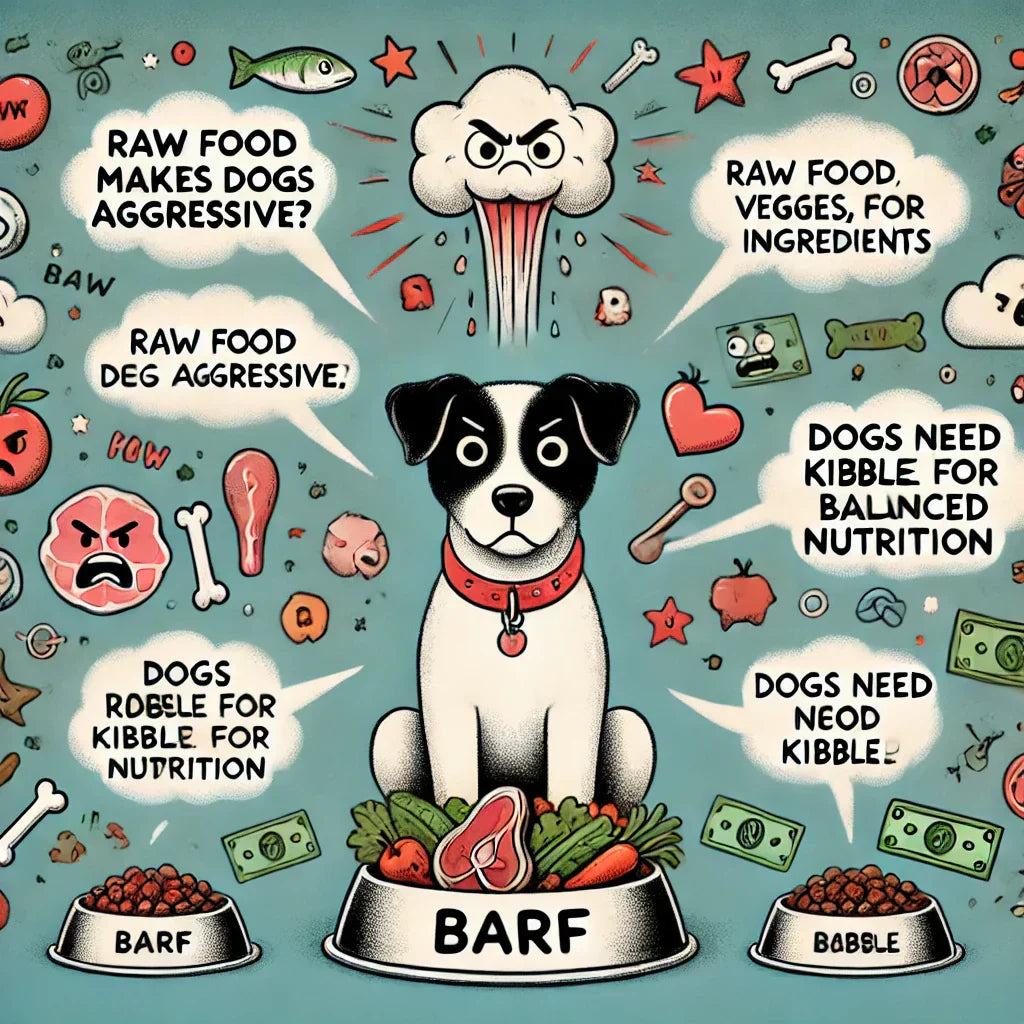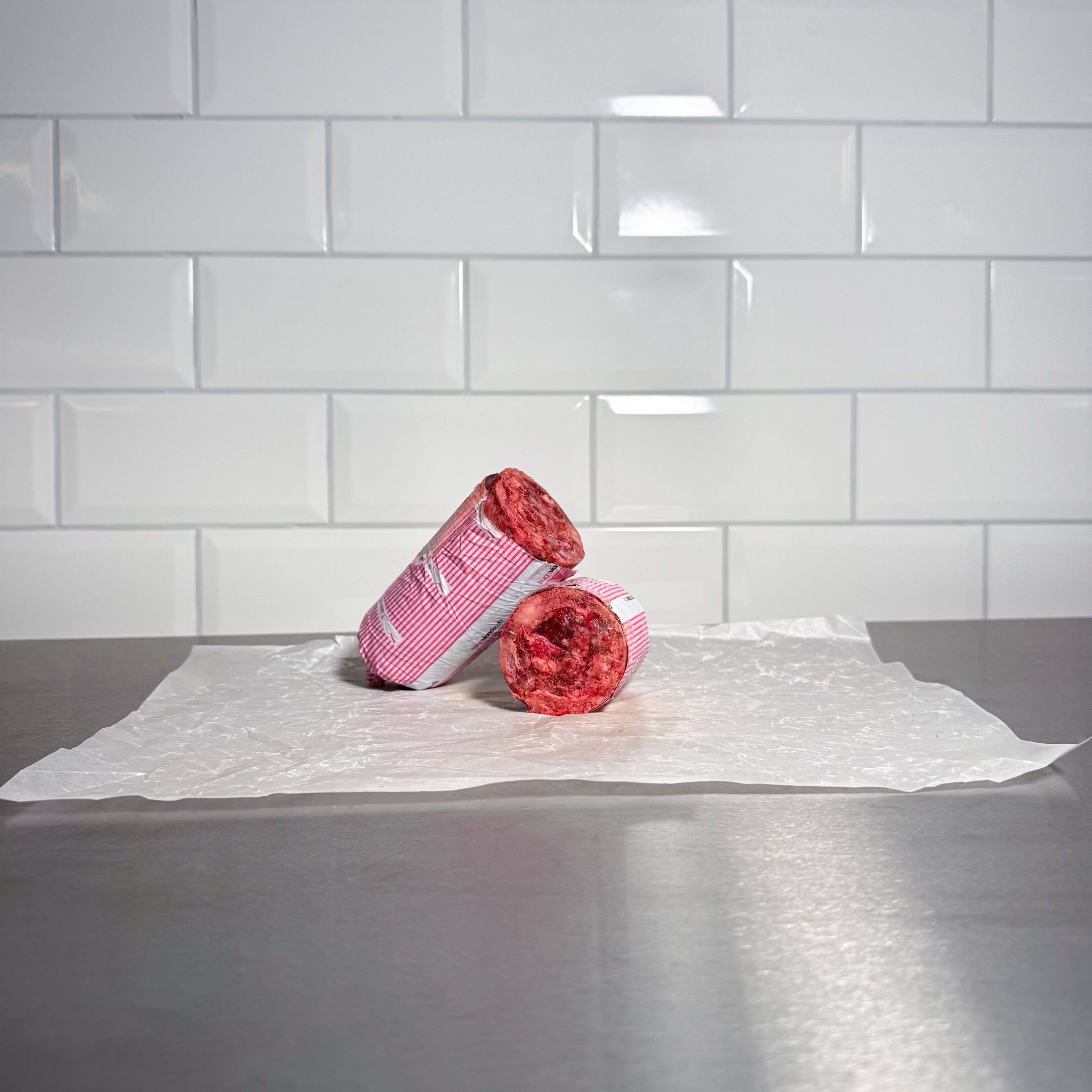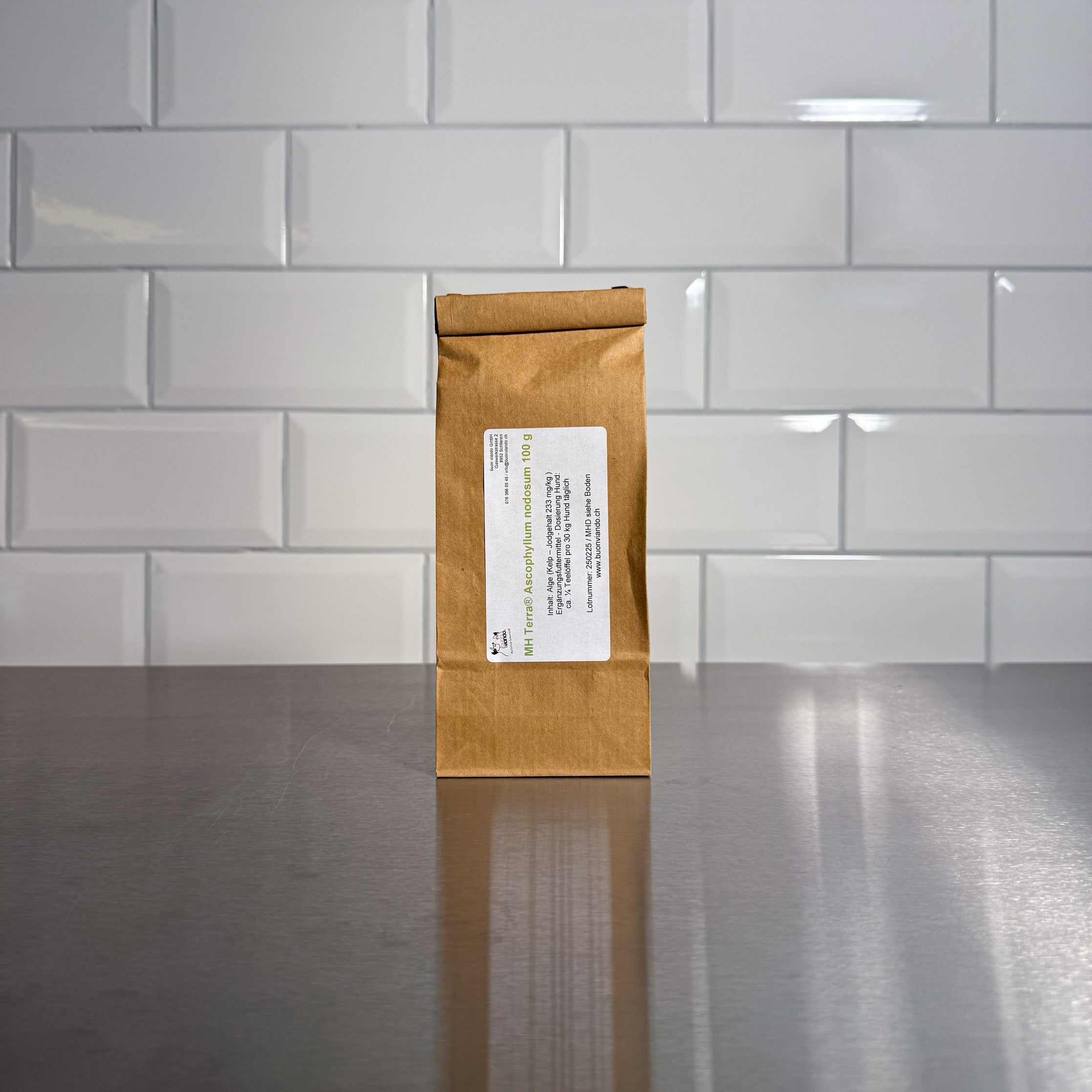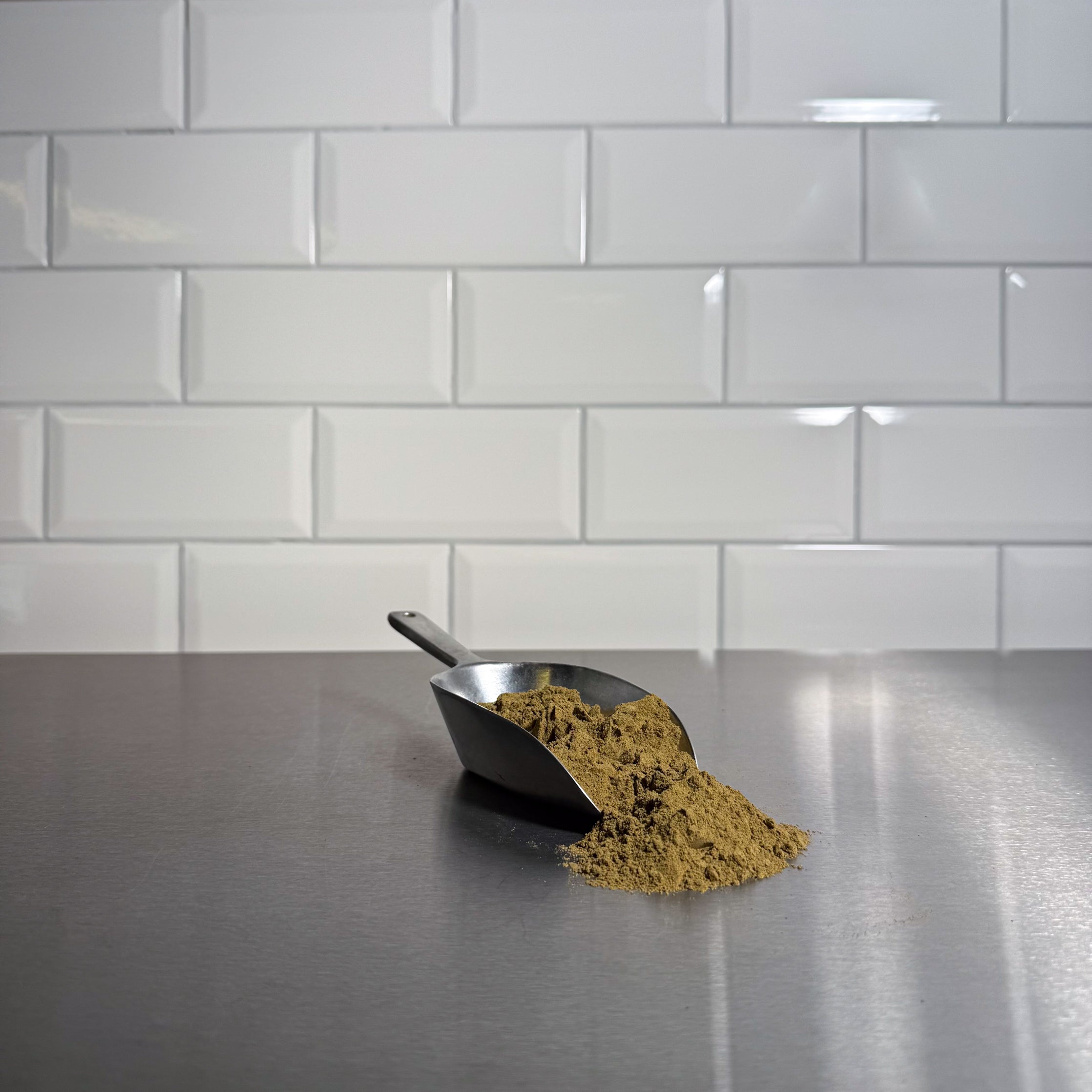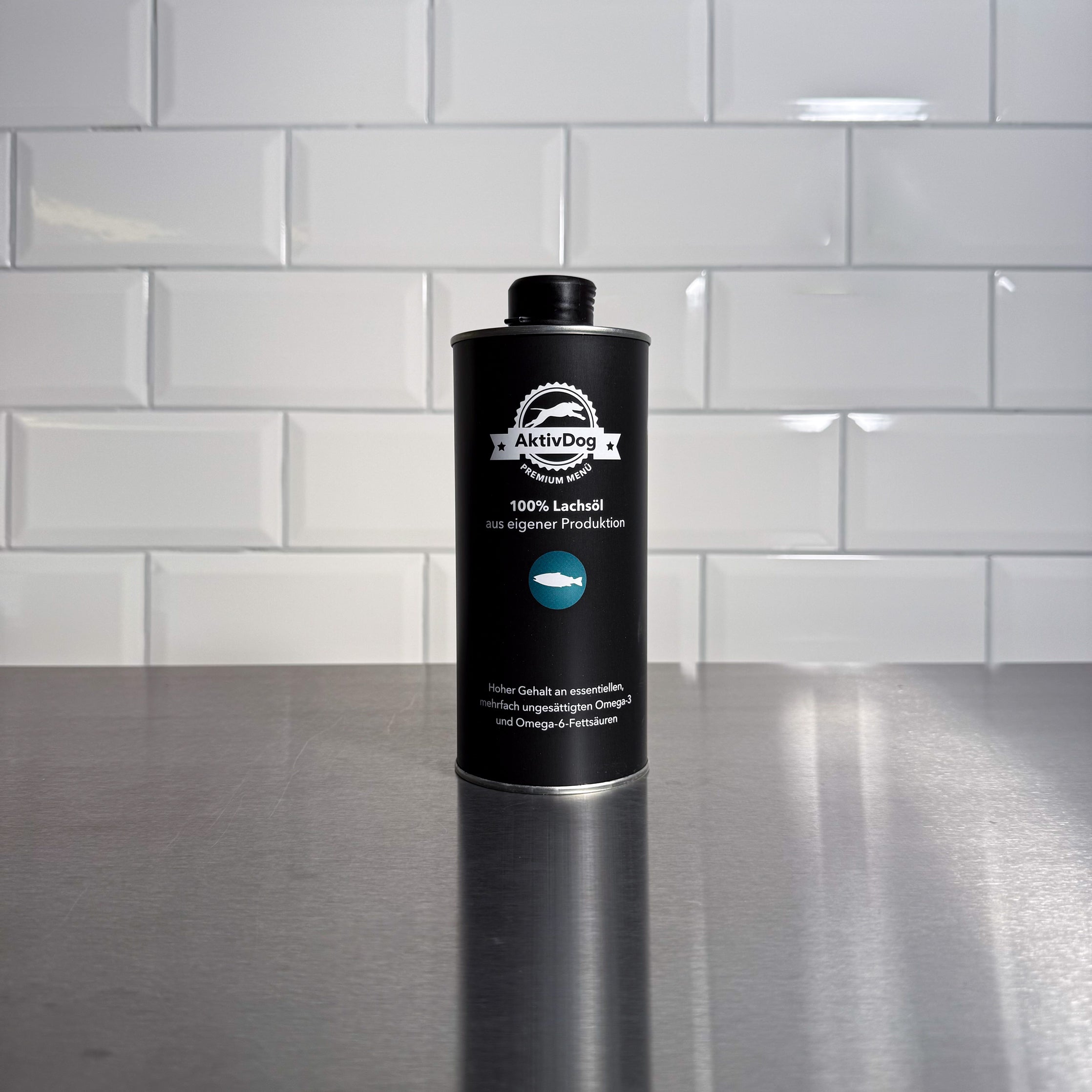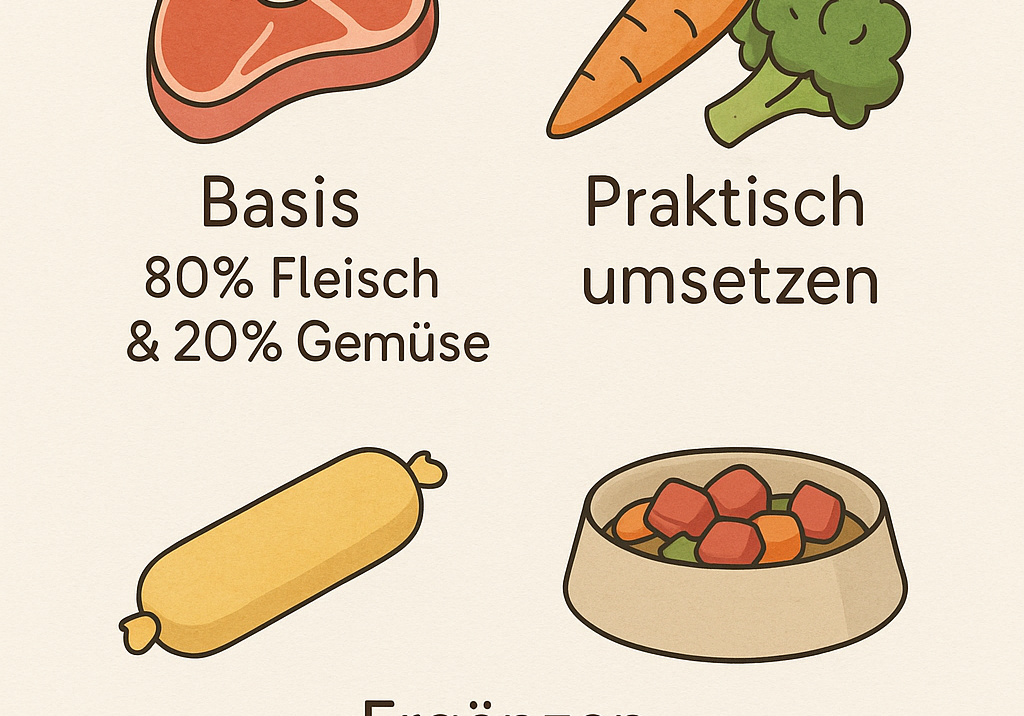Why Raw Feeding Is Better Than Its Reputation
Barfing is the most natural and healthiest form of nutrition for dogs. Nevertheless, there are numerous myths and misconceptions surrounding raw feeding. We explain why raw feeding is not only healthy, but also simple and safe – and examine the most common misconceptions.
Myth 1: Barfing is too complicated and time-consuming
Some dog owners believe they have to become nutrition experts to properly feed their dog raw food. But in truth, raw feeding is no more complicated than putting together a balanced meal for ourselves. There are practical feeding plans from nutritionists and pre-prepared sausages that make getting started easier. This is where our Balance Lines and Vegetable Mix come into play. If you spend a little time getting started, you'll quickly realize: Once you've planned it, raw feeding is as easy as opening a can – only healthier.
The fact is: good education is important – we're here for you. Contact us for basic or product advice.
Myth 2: Raw meat makes dogs aggressive
This myth persists, but is completely unfounded. Raw meat doesn't suddenly turn a dog into a bloodthirsty predator. Quite the opposite: Many raw feeders report that their dogs have become more relaxed and balanced. Aggression doesn't arise from the food, but from training and environmental factors. If that were true, wolves would be constantly attacking each other.
Myth 3: Raw feeding causes nutrient deficiencies
Critics claim that raw feeding doesn't provide all the necessary nutrients. But that's only the case if it's done incorrectly—just like any other diet. A balanced raw diet contains everything a dog needs: meat, organ meats, bones, plant components, omega-3, and iodine ensure a natural and healthy diet. High-quality ready-made food isn't automatically "better"—it's just industrially processed.
Read our blogs about the composition of balanced raw feeding and contact us for further support.
Myth 4: Bones are dangerous
The problem isn't the bone itself, but its preparation. Cooked or fried bones can splinter and become dangerous. Raw, meaty bones, on the other hand, are well-tolerated by dogs and even help clean their teeth naturally. Those who are afraid of bones can opt for ground versions or bone meal.
The fact is: In the right form, they are completely safe and an important part of a natural dog diet.
Read our blog about feeding bones for more information.
Myth 5: BARF is expensive
"Nobody can afford BARF!" – This argument is often cited, but it's not true. Industrially produced premium foods are often more expensive than a homemade r aw diet, especially if you use regional sources or buy in larger quantities. Furthermore, BARF is better absorbed by dogs, which is why smaller amounts are fed. This not only means better nutrient absorption but also long-term savings. And let's be honest: A healthy dog means fewer veterinary bills – that saves more in the long run than you think!
Myth 6: Feeding raw meat makes dogs more likely to get salmonella, parasites, or worms.
Dogs are naturally scavengers and therefore have a digestive system designed to deal with potential pathogens such as salmonella and parasites. Their stomach acid is particularly concentrated, which kills many bacteria and parasites. Furthermore, dogs have a relatively short digestive tract, which minimizes the time food stays in the body and thus makes it difficult for parasites to establish a colony.
Although the meat used for dog food production is subject to strict food controls, small amounts of pathogens may still be present. However, thanks to the dog's natural defense mechanisms, these rarely pose a health risk. For added safety, our products are deep-frozen, which reliably kills even the last potential parasites or worm eggs.
Regardless of the feeding method, dogs should be checked regularly for worm infestation. This is best achieved through regular stool samples with the wormCHECK, rather than administering deworming medication as a precaution. Preventative administration of deworming medication without a diagnosis is not recommended and can even be harmful.
Good kitchen hygiene is also important – just as it is when handling raw meat for human consumption. By making sure to thoroughly clean surfaces, tools, and hands after contact with raw meat, you also minimize your own risk of infection.
Myth 7: A dog needs large portions of food, otherwise it will starve.
Many dog owners fear that their dogs won't feel full due to the seemingly small portions of food they receive when feeding raw food. This is because industrially produced food is often highly swollen and therefore has more volume than a natural BARF meal.
In fact, the amount of food required with a raw feeding diet is smaller because it contains no unnecessary fillers. The nutrient density is much higher, so the dog receives optimal nutrition with a smaller portion. It's not the volume that counts, but the quality of the nutrients. A healthy dog fed appropriately maintains a stable weight, is active, and content—the best sign that it's getting enough nutrition.
Myth 8: Puppies shouldn't be fed raw feeding
Contrary to popular belief, it's not a problem to feed puppies raw feeding from the very beginning—even from the first time they eat at the breeder's. Of course, young dogs should receive their mother's milk for as long as possible. Afterward, supplementing with fresh meat is the best start to a long and healthy life. By feeding a raw feeding diet, puppies and young dogs grow evenly and are generally more balanced and active.
It's also not necessary to feed a puppy fundamentally differently than an adult dog. Puppies do have a higher nutrient requirement, but this is met by the comparatively larger amount of food they eat, which amounts to 4–10% of their body weight. If the amount of food is constantly adjusted to the young dog's current weight, it can grow healthily and the risk of musculoskeletal disorders is minimized.
You can find more information and recommendations on BARF feeding puppies in our blog post, Growing Up Naturally: Why BARF Is the Best Start for Your Puppy.
Myth 9: BARF is also vegetarian or vegan
More and more people are adopting a vegetarian or vegan diet for a variety of reasons. Some would like to adopt this lifestyle for their dogs as well. But is it possible to feed dogs a vegetarian or vegan diet? The clear answer is: No! Dogs are carnivores and should never be fed a meat-free diet. Puppies, in particular, need a species-appropriate diet consisting of meat or fish, supplemented with fruits and vegetables. Bones containing valuable calcium are a good snack.
If you're vegetarian or vegan and find handling raw meat uncomfortable, try our Beef Balance Plus Sterilized or our dry raw food and feed your dog the way nature intended.
Conclusion: Raw feeding is simple, healthy, and safe
Most myths about raw feeding are based on misconceptions or misinformation. Anyone who delves into the topic will quickly realize: raw feeding isn't complicated, isn't dangerous, and isn't more expensive than high-quality ready-made dog food. Rather, it offers the most natural nutrition for dogs – and you can see it in their faces: Healthy skin, shiny coats, strong teeth, and a contented temperament speak for themselves. So, put an end to the myths and get to the bowl – your pet will thank you!

